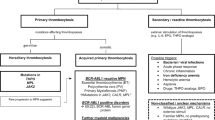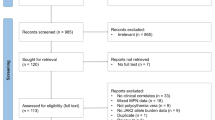Abstract
We assessed the effect of the intercellular mediator of inflammation, platelet activating factor (PAF), on platelet function. The interaction between PAF and the platelet agonists ADP, thrombin and convulxin was analyzed in vitro in whole blood with the use of flow cytometry and was further characterized with the use of receptor antagonists to PAF (ABT-491), P2Y1 (MRS-2179), and P2Y12 (cangrelor) as well as a monoclonal anti-PSGL-1 antibody (anti-CD162). Low concentrations of PAF (0.1 nM) synergistically augmented platelet activation induced by other agonists (P < 0.01). Augmentation by PAF was receptor mediated and did not require platelet–leukocyte interaction. With >99% inhibition of P2Y receptor-mediated platelet activation, greater than additive activation was still observed with the combination of ADP plus PAF. Accordingly, PAF synergistically augments platelet activation in response to ADP and thrombin, and the extent of inhibition exerted by P2Y receptor antagonists is decreased in the presence of PAF.





Similar content being viewed by others
References
Hansson GK (2005) Inflammation, atherosclerosis, and coronary artery disease. N Engl J Med 352:1685–1695. doi:10.1056/NEJMra043430
Libby P (2002) Inflammation in atherosclerosis. Nature 420:868–874. doi:10.1038/nature01323
Esmon CT (2003) Inflammation and thrombosis. J Thromb Haemost 1:1343–1348. doi:10.1046/j.1538-7836.2003.00261.x
Vadas P, Gold M, Perelman B et al (2008) Platelet-activating factor, PAF acetylhydrolase, and severe anaphylaxis. N Engl J Med 358:28–35. doi:10.1056/NEJMoa070030
Ogden F, DeCoster MA, Bazan NG (1998) Recombinant plasma-type platelet-activating factor acetylhydrolase attenuates NMDA-induced hippocampal neuronal apoptosis. J Neurosci Res 53:677–684. doi :10.1002/(SICI)1097-4547(19980915)53:6≤677::AID-JNR6≥3.0.CO;2-2
Jean-Baptiste E (2007) Cellular mechanisms in sepsis. J Intensive Care Med 22:63–72. doi:10.1177/0885066606297123
Chao W, Olson MS (1993) Platelet-activating factor: receptors and signal transduction. Biochem J 292(Pt 3):617–629
Prescott SM, Zimmerman GA, Stafforini DM, McIntyre TM (2000) Platelet-activating factor and related lipid mediators. Annu Rev Biochem 69:419–445. doi:10.1146/annurev.biochem.69.1.419
Sturk A, Asyee GM, Schaap MC, van Maanen M, ten Cate JW (1985) Synergistic effects of platelet-activating factor and other platelet agonists in human platelet aggregation and release: the role of ADP and products of the cyclooxygenase pathway. Thromb Res 40:359–372. doi:10.1016/0049-3848(85)90271-3
Francesconi M, Scapin M, Casonato A, Girolami A, Deana R (2000) Adrenaline potentiates type 2B von Willebrand factor-induced activation of human platelets by enhancing both the formation and action of thromboxanes. Thromb Res 100:293–303. doi:10.1016/S0049-3848(00)00318-2
Shah BH, Rasheed H, Rahman IH et al (2001) Molecular mechanisms involved in human platelet aggregation by synergistic interaction of platelet-activating factor and 5-hydroxytryptamine. Exp Mol Med 33:226–233
Ware JA, Smith M, Salzman EW (1987) Synergism of platelet-aggregating agents. Role of elevation of cytoplasmic calcium. J Clin Invest 80:267–271. doi:10.1172/JCI113058
Shah BH, Lashari I, Rana S, Saeed O, Rasheed H, Arshad SS (2000) Synergistic interaction of adrenaline and histamine in human platelet aggregation is mediated through activation of phospholipase, map kinase and cyclo-oxygenase pathways. Pharmacol Res 42:479–483. doi:10.1006/phrs.2000.0721
Rand MD, Lock JB, van’t Veer C, Gaffney DP, Mann KG (1996) Blood clotting in minimally altered whole blood. Blood 88:3432–3445
Keating FK, Dauerman HL, Whitaker DA, Sobel BE, Schneider DJ (2006) Increased expression of platelet P-selectin and formation of platelet-leukocyte aggregates in blood from patients treated with unfractionated heparin plus eptifibatide compared with bivalirudin. Thromb Res 118:361–369. doi:10.1016/j.thromres.2005.07.020
Holmes MB, Sobel BE, Howard DB, Schneider DJ (1999) Differences between activation thresholds for platelet P-selectin glycoprotein IIb-IIIa expression and their clinical implications. Thromb Res 95:75–82. doi:10.1016/S0049-3848(99)00019-5
Achyuthan KE, Dobson JV, Greenberg CS (1986) Gly–Pro–Arg–Pro modifies the glutamine residues in the alpha- and gamma-chains of fibrinogen: inhibition of transglutaminase cross-linking. Biochim Biophys Acta 872:261–268
Kabbani SS, Watkins MW, Ashikaga T et al (2001) Platelet reactivity characterized prospectively: a determinant of outcome 90 days after percutaneous coronary intervention. Circulation 104:181–186
Barnard MR, Krueger LA, Frelinger AL, Furman MI, Michelson AD (2003) Whole blood analysis of leukocyte–platelet aggregates. In: Current protocols in cytometry. Wiley & Sons, Inc., pp 6.15.1–6.15.8
Xia Z, Wong T, Liu Q, Kasirer-Friede A, Brown E, Frojmovic MM (1996) Optimally functional fluorescein isothiocyanate-labelled fibrinogen for quantitative studies of binding to activated platelets and platelet aggregation. Br J Haematol 93:204–214. doi:10.1046/j.1365-2141.1996.445980.x
Schneider DJ, Taatjes DJ, Howard DB, Sobel BE (1999) Increased reactivity of platelets induced by fibrinogen independent of its binding to the IIb-IIIa surface glycoprotein: a potential contributor to cardiovascular risk. J Am Coll Cardiol 33:261–266. doi:10.1016/S0735-1097(98)00515-4
Chou TC, Talalay P (1984) Quantitative analysis of dose-effect relationships: the combined effects of multiple drugs or enzyme inhibitors. Adv Enzyme Regul 22:27–55. doi:10.1016/0065-2571(84)90007-4
James-Kracke MR, Sexe RB, Shukla SD (1994) Picomolar platelet-activating factor mobilizes Ca to change platelet shape without activating phospholipase C or protein kinase C; simultaneous fluorometric measurement of intracellular free Ca concentration and aggregation. J Pharmacol Exp Ther 271:824–831
Zimmerman GA, McIntyre TM, Mehra M, Prescott SM (1990) Endothelial cell-associated platelet-activating factor: a novel mechanism for signaling intercellular adhesion. J Cell Biol 110:529–540. doi:10.1083/jcb.110.2.529
Macconi D, Foppolo M, Paris S et al (1995) PAF mediates neutrophil adhesion to thrombin or TNF-stimulated endothelial cells under shear stress. Am J Physiol Cell Physiol 269:C42–C47
Hanahan DJ (1986) Platelet activating factor: a biologically active phosphoglyceride. Annu Rev Biochem 55:483–509. doi:10.1146/annurev.bi.55.070186.002411
Triggiani M, Goldman DW, Chilton FH (1991) Biological effects of 1-acyl-2-acetyl-sn-glycero-3-phosphocholine in the human neutrophil. Biochim Biophys Acta 1084:41–47
Clay KL, Murphy RC, Andres JL, Lynch J, Henson PM (1984) Structure elucidation of platelet activating factor derived from human neutrophils. Biochem Biophys Res Commun 121:815–825. doi:10.1016/0006-291X(84)90751-4
Palabrica T, Lobb R, Furie BC et al (1992) Leukocyte accumulation promoting fibrin deposition is mediated in vivo by P-selectin on adherent platelets. Nature 359:848–851. doi:10.1038/359848a0
McEver RP, Cummings RD (1997) Role of PSGL-1 binding to selectins in leukocyte recruitment. J Clin Invest 100:S97–S103. doi:10.1172/JCI119556
Bouchard BA, Tracy PB (2001) Platelets, leukocytes, and coagulation. Curr Opin Hematol 8:263–269. doi:10.1097/00062752-200109000-00001
Weber C, Springer TA (1997) Neutrophil accumulation on activated, surface-adherent platelets in flow Is mediated by interaction of Mac-1 with fibrinogen bound to alpha IIbbeta 3 and stimulated by platelet-activating factor. J Clin Invest 100:2085–2093. doi:10.1172/JCI119742
Fogelson AL, Wang NT (1996) Platelet dense-granule centralization and the persistence of ADP secretion. Am J Physiol 270:H1131–H1140
Acknowledgements
We wish to thank Grace Sullivan, BS, for her excellent technical assistance. Funding: Supported in part by an unrestricted grant from The Medicines Company.
Author information
Authors and Affiliations
Corresponding author
Rights and permissions
About this article
Cite this article
Keating, F.K., Schneider, D.J. The influence of platelet activating factor on the effects of platelet agonists and antiplatelet agents in vitro. J Thromb Thrombolysis 28, 38–45 (2009). https://doi.org/10.1007/s11239-008-0239-5
Received:
Accepted:
Published:
Issue Date:
DOI: https://doi.org/10.1007/s11239-008-0239-5




